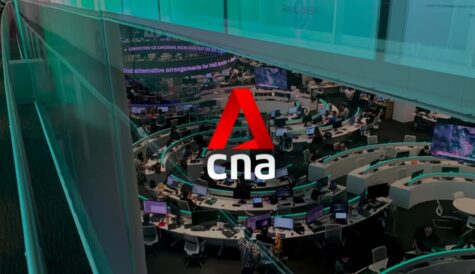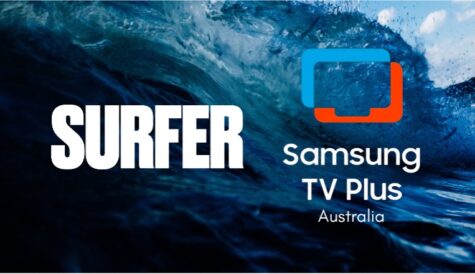
After more than 40 years of operation, DTVE is closing its doors and our website will no longer be updated daily. Thank you for all of your support.
News of the World: the changing face of news channels
The growing relevance of social networks and the web as a source of news presents both a threat and an opportunity to established TV channels. Andy Fry reports.
In December 2011, Associated Press asked news editors what they thought was the biggest news story of an incredibly busy year. Ahead of the EU Debt Crisis, Arab Spring and Japan’s Tsunami, they selected the Death Of Osama Bin Laden in May.
As a one-off editorial event, the death of the Western World’s arch-nemesis undoubtedly ranks alongside the assassination of JFK, the moon landing and 9/11 as an iconic ‘where were you when…?’ moment. But the story also had something to tell us about the changing nature of news dissemination; and how this is impacting on the world’s major TV news operations.
Breaking the story
For a start, there’s the fact that Twitter, not TV, is credited with breaking the story. Digital media website Mashable polled its users on how they first heard the story. While it’s important to keep in mind that Mashable’s audience are heavily tech-literate, it’s still interesting for TV execs to note that Twitter (28.5%) and Facebook (20%) both came out ahead of TV (18%), with phone/text not far behind (12%). Tied with TV at 18% in Mashable’s survey was ‘other sources’, which could include radio, but also the fast-growing iPad/tablet user-base. Again, this presents a challenge to TV because it allows audiences to consume screen-based news in different ways. On the one hand, it exposes them to popular news apps. On the other, it encourages the rise of services like Flipboard, which cut across brand-based businesses by offering curated/aggregated news content. [icitspot id=”22593″ template=”box-story”]
It’s not just social and mobile media that are changing the business of traditional TV news either. While commercially-funded operations including CNN, BBC World News and Sky News all experienced audience spikes in the aftermath of Osama’s death, their grip on news has been challenged by the growth of state-funded channels like Al Jazeera English and Russia Today. Here, the issue for the incumbents is two-fold. First, how do you compete with channels that don’t have to make a profit? Second, how do you combat the rise of news networks that come from a different geo-political perspective? Russia Today’s coverage highlighted research that suggested 40% of Russians were distrustful of the details around Bin Laden’s death. With RT giving airtime to the idea that Bin Laden had been a CIA asset or that he had been dead for years, the question for news channels is how their version of events will play in territories where they are associated with a rival state’s foreign policy (see also the clear divergence in attitudes surrounding Russia and China’s recent veto of a UN Resolution on Syria).
Authoritative brand
At CNN, staff are conscious of all of the above issues – and working hard to address them, says Peter Bale, who recently moved over from MSN to become vice-president and general manager of CNN International Digital. A major priority has been getting CNN-branded content on to all available platforms. However he goes on to stress that this isn’t just about being first with a story: “Speed is important,” he says, “but it’s no longer a distinguishing factor for news organisations because of the rise of platforms like Twitter. For CNN, the real questions are: where do audiences go when they want to find out more about a subject? What form do they want content in? And how can we maintain our editorial neutrality while reflecting the full range of opinions?”
For this reason, “we need to be authoritative,” says Bale, “Our brand has to be strong enough that viewers come to us to have stories explained – even if they may have first been alerted to them via another source. We also need to show we are across the live debate – and I think our TV anchors do a great job of interacting with content coming from Twitter and Facebook.” If there’s a complication with this immersive editorial philosophy it’s that CNN also need to protect its existing commercial model, which is primarily based around the subs and ad revenue it derives from its 265 million international households and 100 million US households. For example, Al Jazeera decided in 2007 to stream its entire content live via YouTube. But for CNN such a move would create a serious hole in its pay TV business, says Casey Harwood, senior vice-president, digital and commercial development, EMEA, at CNN parent Turner Broadcasting. “We have to be careful not to jeopardise our relationships with both platforms and advertisers, while at the same time giving our target audiences what they want,” he says.
In some cases, this isn’t so difficult, argues Harwood – because editorial and commercial objectives can align. “The iPad is increasingly important, but I don’t think audiences want the entire CNN channel streaming on that platform,” says Harwood. “So we’ve developed a different approach to TV.”
In the US there have been developments following CNN’s acquisition of Zite, an app that allows iPad users to assemble their own screen-based news bulletin by drawing content from a variety of sources. While it’s early days, there’s clearly a major distinction between Zite’s curation model and the kind of uni-directional news broadcasting that CNN and the BBC have pioneered in past decades.
How is the TV component of the business dealing with these changes How does it justify carriage fees when there’s free news content available elsewhere? And how does it stay relevant to advertisers and audiences when news delivery has become so competitive?
“Partly, it’s about the quality of the news operation, which is still important to pay TV platforms,” says Harwood, “and partly it’s about offering those platforms something extra, like on-demand or multi-platform. At the same time, there has been a editorial shift of emphasis, towards analysis and insight.”
Harwood sees opportunity in this approach: “When authoritative analysis is part of your brand proposition, it opens up new kinds of business model. CNN brand licensing, for example, or programme distribution of longer form shows.”
CNN’s attempt to protect what it has while expanding into new areas is echoed at BBC World News: “We’re in 300 million homes,” says commercial director Colin Lawrence, “so the issue isn’t really looking for untapped territories, it’s ensuring we get renewal on existing deals while also looking for new ways to distribute our content in the television and digital markets.”
Trusted by audiences
On the TV front, for example, BBC World News has just extended its existing partnership with SFR in France so that it covers satellite, DSL and fibre offers. In Sweden, meanwhile, it has forged a partnership with TV4 that will see the latter broadcast a selection of BBC World News programming on its new TV4 News channel. Outside EMEA, recent breakthroughs include the launch of BBC World News on Comcast’s Xfinity TV in various parts of the US.
As for digital media, Lawrence says that BBC.com has 60 million users worldwide and has also signed a deal to allow its content to be embedded on Flipboard, the iPad content organiser. In the mobile space, it has a BBC News App available on Android and tablet devices. Underlining the significance of this sector, BBC figures show that “BBC News sites and apps are visited by around 9.7 million users a month on mobile and tablet devices”. This is around 26% of the 36 million who visit the BBC’s News sites.
Like the team at CNN, Lawrence says the best protection for brands like the BBC is that “we are trusted by audiences”. But he also stresses the value of being ahead of the technology curve. “As a news provider, I think we benefit from the fact that the BBC has made such advances with iPlayer,” says Lawrence. “We’re well-positioned in terms of developments around discovery and recommendation in VOD and intelligent EPGs.”
Michael Peters, CEO of Lyon-based Euronews, is in charge of a different kind of news outfit from CNN and BBC World News. But he is pursuing a similar twin-track strategy. In terms of TV distribution, he says the channel is now available to 350 million homes in 150 countries. Recent deals expanding that footprint include DTT distribution agreements in Greece, Cyprus and Israel. As for non-standard distribution, he is making aggressive moves – but doesn’t like the phrase ‘TV Everywhere’: “It doesn’t reflect the distinct needs of platforms. We make a weekly presenter-led magazine show for Air France, but you’d never see that on our TV channel. Content must be fully-tailored.”
Areas of innovation for Euronews include smart TV deals, VOD content on YouTube and Dailymotion and the launch of two new apps taking the channel’s initiatives in this space to four. “We have a Live App and a No Comment App, but the launch of our Express App and Universal App is significant,” says Peters. There are also plans for web radio, combining news and music.
Like CNN and BBC World News, Peters picks out independence and authority as key attributes of the Euronews brand. But by independence he doesn’t just mean a journalistic aspiration. “We have 21 shareholders from countries like France, Italy, Russia and Turkey – and around 23 nationalities working in our newsroom. We are like the UN of news channels. When you have a story like the recent France-Turkey Armenia genocide row it’s inevitable you get a different editorial discussion than the one you might have at a news channel like France24.”
Core revenue
As with its rivals, the fact that there are new ways for Euronews to reach its audiences doesn’t detract from the fact that core revenues still come from TV. Ad sales director Olivier de Montchenu thinks the channel has a good story to tell. For a start, its unusual ownership model means its content is viewed widely on terrestrial TV news bulletins as well as via pay TV: “Our audience is very large, because it is across both pay TV and terrestrial,” he says. “We reach upmarket audiences but because of the way we are distributed we also reach a much more mainstream audience. The advantage of this is that we have a younger profile than most of our main rivals.” Also significant, he says, is that the channel is available in 11 languages – both as a TV service and online. “That makes us very complementary to the Anglo-American channels in terms of advertising,” says de Montchenu. “As a result we have some excellent integrated relationships with leading clients such as Rolex, Shell and The Qatar Foundation.”
In business news, immediacy and always-on access are even more important than in general news. Currently, CNBC’s audience of upmarket business travellers has access to services including CNBC Mobile Web, CNBC’s Real-Time iPhone App, CNBC’s Real-Time iPad App and CNBC’s Real-Time Android App. Together, these services delivered 1.8 billion page views in 2011, while a good indicator of how the market is moving is the fact that its iPad App has just crossed the one million download mark.
While some stories may break at another business site, CNBC’s interpretation, insight and access to senior executive interviewees make it a must view for many, argues Justine Powell, vice-president, distribution in EMEA, particularly when the global economy is as volatile as it is right now. “The real-time data and analysis is vital,” she says, “but so is our coverage of major events like the recent World Economic Forum in Davos. We have a number of long-form factual strands which give business audiences real insights into how senior executives at blue-chip companies like Boeing or Coca Cola operate.”
In terms of TV distribution, this thesis is borne out by the fact that the channel’s distribution is so solid, says Powell – who puts EMEA distribution at around 130 million. “We’ve recently signed a number of key renewals, which is massively important for us,” she says. “And 2012 will see us trying to build out our distribution further in central and eastern Europe.” In terms of its offering to advertisers, CNBC is also able to point to the fact that online iteration CNBC.com has just reported a record quarter, adds Powell.
Because of the specialised nature of its audience, CNBC is the best-placed of the news brands to charge premium rates for content, something it does via its CNBC Pro service to traders. Available at an entry level price of US$300 (?225) per year, CNBC Pro is available across desktop and mobile platforms but is kept distinct from CNBC the TV channel. The likes of CNN are also looking at ways to generate new revenues streams from content but are wary about premium price points because of the potential downward impact on audiences. “Our advertisers [which include Korean Airlines, Nokia and Hyundai] need us to deliver large, targeted audiences across platforms,” says Turner’s Harwood. “So in terms of additional revenues, I think our model needs to be more like the kids licensing business, which is something we know a lot about from our other channels.”
Al Jazeera head of new media Moeed Ahmad, meanwhile, has left no stone unturned as he seeks to deliver the company’s international news services across as many digital platforms as possible. “Mobile apps, iPad, online, connected TV, we’re making our content available to audiences in as many forms as possible.”
This approach has proved critical in transforming attitudes to the Al Jazeera brand. “Go back to the early days of the Iraq and Afghan Wars and the only way audiences could judge us was by what politicians said about us. Now they can see the channel live streaming on YouTube and via our own website,” he says.
Open access approach
This open access approach to distribution has worked wonders. In the aftermath of Osama Bin Laden’s death, for example, Al Jazeera English recorded its highest ever levels of online traffic. And 40% came from the US, where the channel isn’t available via traditional distribution platforms like cable TV.
Access to Middle Eastern events has always been part of the DNA of Al Jazeera. Now, says Ahmad, new media is enabling the channel to become even more embedded thanks to information provided by on-the-ground sources via platforms like Twitter and Facebook. This was a particular feature of the Arab Spring, though it’s a tool he is cautious about relying on too heavily: “The Iranian Elections in 2009 is the example I always use. Twitter provided insights into unfolding events at a time when state censorship of the media made it hard to get accurate information. But there was also a debate about how genuine some of the Twitter information was,” explains Ahmad. “For me, verification is extremely important and is something we have become very good at. We have a popular live blog on Syria right now but are extremely vigilant about the kind of content that is posted there.”
New media enables Al Jazeera to demonstrate that there is more to the service than Middle Eastern coverage. “We’re a global news organisation and can point to the fact that audiences come to us for all kinds of news events, such as the Japan Tsunami.”
One significant change in the international news business is that on-the-spot broadcasters are better equipped than ever to take major breaking stories to the global stage themselves. A case in point is NHK World TV, which responded quickly and efficiently to the Japanese Tsunami and aftermath in 2011.
In normal times, publicly-funded NHK World TV provides 24/7 information to non-Japanese people around the world. Typically this would be a news bulletin on the hour followed by current affairs programmes – all delivered in English language.
During the crisis, however, it took a news feed from NHK’s domestic news and added English interpretation so the world could understand what was happening. It also piped this service into Japan so foreign residents could stay informed and allowed third-party networks to use its video feed in order to support their own reporting of the crisis.
The channel’s digital services added to the coverage, with 5.4 million users looking at live streaming and on-demand content related to the crisis in the first two weeks (the channel also made its content available via Livestation). Additionally there was a live TV iPhone application that provided English information.
After the crisis, the NHK family continued to cover all aspects of the crisis in depth. This content appeared on NHK’s domestic channels and was then translated into English for international broadcast on NHK World TV. As a result, NHK World TV remained one of the key destinations for people wanting to keep following the story after it had fallen down the news agenda elsewhere.
When this activity is combined with the raw footage requests that NHK received, it underlines the point that proximity to a story has become a significant consideration.



